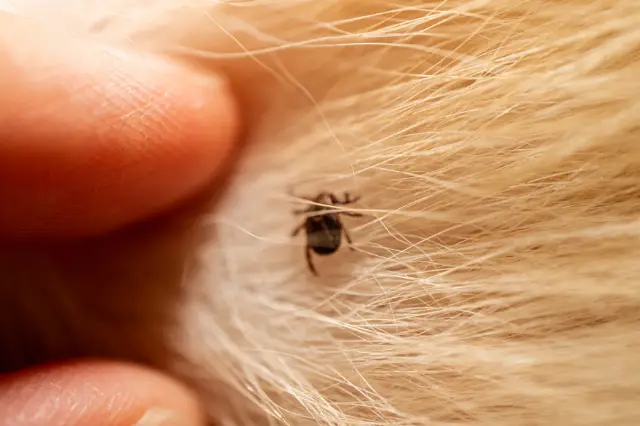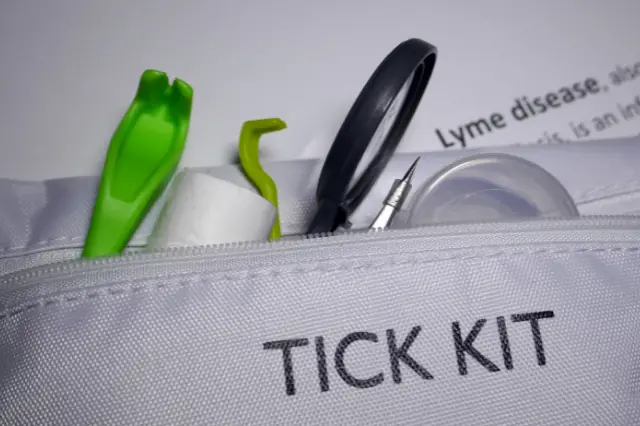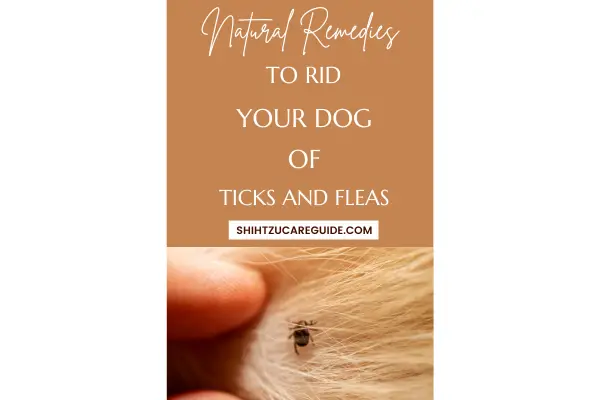Ticks and fleas are an annoyance for your dog and for you, not to mention they can cause health problems. There are many different powders and sprays out there, but with their chemical-based formulas, they could be harmful to the pet’s health or to yours.
Don’t worry, those powders and sprays aren’t your only means of defense against these tiny tyrants. There are natural remedies to rid your dog of ticks and fleas that are safe for everyone and can be effective for your dog.
For starters, you can check out your local pet store. They offer many different products for your dog in regard to flea and tick care that are made from all natural ingredients.
They have no chemicals that could be unsafe for your pets or family, but they have ingredients that are very effective in getting rid of the pesky pests.
Affiliate Disclosure: This post contains Amazon affiliate links. This means I get a small commission for qualifying purchases made at no extra cost to our dear readers. Please read the disclaimer for more info.
They have powders and sprays with no harmful chemicals. You can find shampoos and special flea brushes to remove them from your dog’s coat.
There are some treatments that you can apply directly to the dog’s skin that won’t harm the dog in any way but will kill the fleas.
Another option is the specially made flea collar that helps repel the fleas but doesn’t have any harsh chemicals that could seep through the dog’s skin so there’s no risk of other pets coming in contact with the collar.

Keep your dog and your home clean. Bathe your dog at least once a week and brush out their fur daily if possible. Vacuum the carpets in your home and keep the pet’s bedding clean as much as possible.
Fleas and ticks thrive in warm, humid areas and they will lay their eggs in these places, so it’s best to vacuum these areas often.
There are some homemade treatments that many pet owners claim to work very well. It’s always advised to consult your veterinarian prior to trying anything new even if it is something you make on your own with natural ingredients.
Apple Cider Vinegar Spray
Apple cider vinegar (ACV) is a versatile home remedy that can also repel ticks and fleas. Create a mixture of equal parts ACV and water in a spray bottle.
Spray your dog’s coat, focusing on the areas prone to infestations, such as the neck, back, and tail. The strong smell of ACV helps deter these parasites while providing a natural shine to your dog’s coat.
Homemade Flea and Tick Shampoo
Create your own flea and tick shampoo using natural ingredients to bathe your dog regularly. Combine 1 quart of warm water, 1 cup of white vinegar or apple cider vinegar and 1 cup of baby shampoo or liquid dish soap.
Dawn dish soap is very gentle and good recommendation. Vinegar can kill fleas and ticks on contact and help prevent future infestations.
Diatomaceous Earth (DE)
Diatomaceous Earth is a fine powder made from fossilized algae. It acts as a desiccant, effectively dehydrating ticks and fleas upon contact.
Sprinkle DE lightly on your dog’s bedding, carpets, and other areas where your dog spends time. Leave it on for a few hours before vacuuming thoroughly.
Ensure your dog does not inhale the powder during application.
If you take all of the preventative measures possible, you can eliminate the need for chemical-based treatments that could be harmful for your dog.
Along with that, use environmentally safe products and your dog will be much healthier.
Where do Dogs Get Fleas and Ticks?
Outdoor Areas: Dogs can pick up fleas and ticks while spending time in grassy or wooded areas, such as parks, hiking trails, or backyards. Fleas and ticks thrive in these environments and can easily attach themselves to passing animals, including dogs.
Contact with Infested Animals: Dogs can acquire fleas and ticks through contact with other infested animals, such as stray dogs, cats, or wildlife like squirrels, raccoons, or rodents.
Fleas and ticks can jump from one animal to another, so if your dog interacts with an infested animal, they may become hosts to these parasites.
Indoor Environments: While fleas and ticks are more commonly found outdoors, they can also be brought inside your home by other pets or through infested items like bedding or furniture.
Fleas, in particular, can reproduce rapidly indoors, making it important to address infestations promptly.
Grooming Salons or Boarding Facilities: Dogs that visit grooming salons or stay at boarding facilities where other animals are present may be at a slightly higher risk of encountering fleas and ticks.
It’s crucial to do your research and make sure that the grooming salon or boarding you are considering has a good rating and check to make sure they maintain proper hygiene and regularly inspect and treat animals for parasites to minimize the risk.
Human Interaction: Although less common, fleas and ticks can also be transferred from humans to dogs. If a person has been in an environment with fleas or ticks, these parasites can hitch a ride on their clothes or skin and eventually end up on the dog.
How to Tell the Difference between Fleas and Ticks?
Size and Appearance
Fleas: Fleas are tiny, typically measuring about 1-4 millimeters in length. They have a flattened body shape and are reddish-brown in color.
Ticks: Ticks are generally larger than fleas, with their size varying depending on their life stage. They can range from 1 to 5 millimeters in length for larvae and nymphs, and up to 1 centimeter or more for adult ticks.
Ticks have a rounded or oval-shaped body and are usually brown, black, or reddish-brown.
Movement
Fleas: Fleas are excellent jumpers and can move rapidly. They have strong hind legs that allow them to leap onto their hosts or move quickly through fur or clothing.
Ticks: Ticks do not jump or hop. They crawl slowly and tend to seek out warm, moist areas of the body to attach themselves.
Feeding Patterns
Fleas: : Fleas are insects that feed on the blood of their hosts. They have specialized mouth parts designed for piercing the skin and sucking blood.
Fleas leave behind itchy bite marks in clusters or lines.
Ticks: Ticks are arachnids that also feed on blood. They have a unique feeding process, where they insert their mouthparts into the skin and may remain attached for an extended period.
Tick bites often result in a singular, raised welt.
How to Tell if Your Dog Has Ticks or Fleas?
Visual Inspection: Examine your dog’s fur and skin for any signs of ticks or fleas. Start by parting the fur and looking closely, especially around the ears, head, neck, underarms, and groin area.

Look for small, dark insects or crawling parasites.
Look for Flea Dirt: Fleas leave behind tiny black or brown specks that resemble dirt or pepper. This flea dirt is actually flea feces, which contain digested blood and may be easier to spot than the fleas themselves.
You can check for flea dirt by using a fine-toothed comb on your dog’s fur, especially around the tail and lower back. If you find black specks that turn reddish-brown when moistened, it is likely flea dirt.
Check for Skin Irritation: Both ticks and fleas can cause skin irritation and itchiness in dogs. Look for signs of excessive scratching, biting, or licking.
Flea bites often cause red, itchy bumps that may be visible on your dog’s skin.
Feel for Bumps or Lumps: Run your hands over your dog’s body, feeling for any raised bumps or lumps. Ticks can feel like small, hard bumps when attached to the skin.
Engage in Active Surveillance: If you suspect your dog may have ticks or fleas but haven’t found any evidence yet, you can conduct active surveillance.
This involves using a flea comb or tick removal tool to comb through your dog’s fur, paying close attention to areas where parasites are commonly found.

Comb slowly and carefully, checking the comb for any fleas, ticks, or flea dirt.
Can You See Fleas and Ticks on Dogs?
Yes, fleas and ticks are visible on dogs. Fleas are small, reddish-brown insects about 1-2 millimeters in size, and they can be seen moving through the dog’s fur.
They are more active around the neck, tail, and belly areas. Ticks, on the other hand, are arachnids that can vary in size depending on their stage of development and species.
They can range from the size of a pinhead to a pea and can be seen attached to the dog’s skin, particularly in areas with less hair, such as the ears, armpits, and groin.
Regular grooming and thorough inspection of a dog’s coat can help detect and remove fleas and ticks.
It’s important to take preventive measures and consult a veterinarian for appropriate treatment if infestation occurs.
Are Fleas and Ticks Year-Round?
Fleas and ticks can be active year-round in certain regions, depending on the climate and environmental conditions.
In warmer climates, where temperatures remain relatively mild throughout the year, fleas and ticks may be active year-round.
In colder regions, they may become less active or dormant during the winter months but can still pose a risk during milder winters or in heated indoor environments.
It’s important to note that while flea and tick activity may vary seasonally, they can still survive and infest pets and homes regardless of the time of year.
Additionally, some areas may have higher populations of fleas and ticks due to local environmental factors.
To effectively protect your pets from fleas and ticks, it is recommended to consult with a veterinarian who can provide guidance tailored to your specific geographical location and climate conditions.
They can recommend appropriate preventative measures such as year-round parasite control and recommend any additional steps necessary to keep your pets and home protected.
Final Thoughts
Protecting your dog from ticks and fleas is crucial for their overall health and well-being. While chemical treatments are available, natural remedies offer a safer alternative.
By implementing regular grooming, using apple cider vinegar sprays, homemade shampoos, diatomaceous earth, and maintaining a clean yard, you can effectively combat ticks and fleas without exposing your furry friend to harmful chemicals.
Remember, consult with your veterinarian before trying any new remedies, especially if your dog has any underlying health conditions.
With these natural remedies, you can help your dog stay happy, healthy, and free from pesky parasites.



